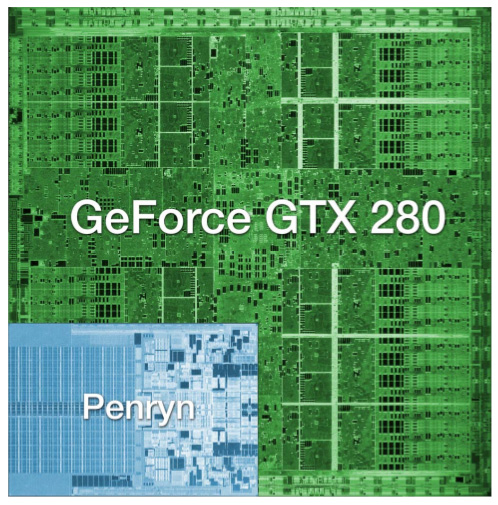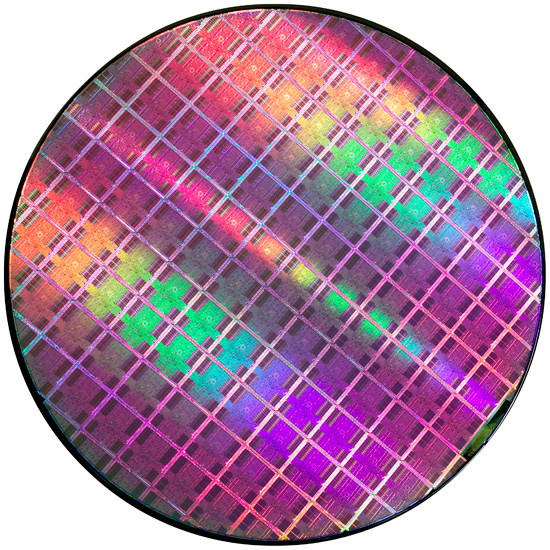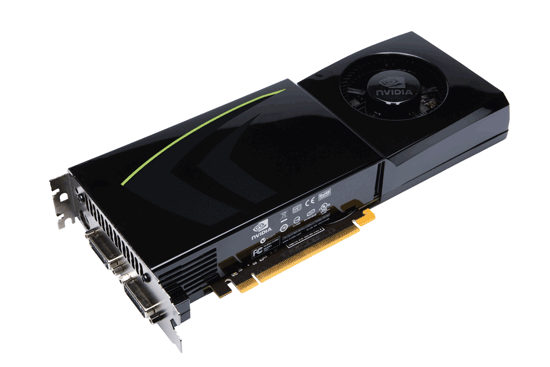NVIDIA's 1.4 Billion Transistor GPU: GT200 Arrives as the GeForce GTX 280 & 260
by Anand Lal Shimpi & Derek Wilson on June 16, 2008 9:00 AM EST- Posted in
- GPUs
One-Point-Four-Billion. That's transistors folks.
The chip is codenamed GT200 and it's the successor to NVIDIA's G80 and G92 families. Why the change in naming? The GT stands for "Graphics Tesla" and this is the second generation Graphics Tesla architecture, the first being the G80. The GT200 is launching today in two flavors, the die of the larger one is pictured below:

Um...yeah...we're reviewing that today
(this die comparison is to scale and that's a dual-core Penryn)
Let's put aside all the important considerations for a moment and bask in the glow of sheer geekdom. Intel's Montecito processor (their dual core Itanium 2) weighs in at over 1.7 billion transistors, but the vast majority of this is L3 cache (over 1.5 billion transistors for 24MB of on die memory). In contrast, the vast majority of the transistors on NVIDIA's GT200 chip are used for compute power. Whether or not NVIDIA has used these transistors well is certainly the most important consideration for consumers, but there's no reason we can't take a second to be in awe of the sheer magnitude of the hardware. This chip is packed full of logic and it is huge.

At most, 94 NVIDIA GT200 die can be produced on a single 300mm 65nm wafer from TSMC. On the other end of the spectrum, Intel can fit around 2500 45nm Atom processors on a 300mm wafer.
If the number of transistors wasn't enough to turn this thing into a dinner plate sized bit of hardware, the fact that it's fabbed on a 65nm process definitely puts it over the top. Current CPUs are at 45nm and NVIDIA's major competitor in the GPU market, AMD, has been building 55nm graphics chips for over 7 months now. With so many transistors, choosing not to shrink their manufacturing process doesn't seem to make much sense to us. Smaller fab processes offer not only the potential for faster, cooler chips, but also significantly reduce the cost of the GPU itself. Because manufacturing costs are (after ramping production) on a per wafer basis, the more dies that can be packed onto a single waffer, the less each die costs. It is likely that NVIDIA didn't want to risk any possible delays arising from manufacturing process changes on this cycle, but that seems like a risk that would have been worth taking in this case.
Instead, GT200 is the largest die TSMC has ever fabbed for production. Quite a dubious honor, and I wouldn't expect NVIDIA to really see this as something of which to be proud. Of course, that doesn't mean we can't be impressed with the sheer massiveness of the beast.
And what do we get from all these transistors? Moving up from 690M transistors of the original G80 and 754M transistors in G92 to the 1.4B transistors of GT200 is not a small tweak. One of the major new features is the ability to processes double precision floating point data in hardware (there are 30 64-bit FP units in GT200). The size of the register file for each SP array has been doubled. The promised ability of an SP to process a MAD and a MUL at the same time has been enhanced to work in more cases (G80 was supposedly able to do this, but the number of cases where it worked as advertised were extremely limited). And the number of SPs has increased from 128 on G80 to 240 with GT200. To better understand what all this means, we'll take a closer look at the differences between G80 and GT200, but first, the cards.
Clock Speeds, Pricing and HDMI Information
NVIDIA is introducing two GT200 parts today along with slightly tweaked branding. The new brand is called the GeForce GTX, and the first two cards are the GTX 280 and GTX 260.
Here's the card, say hello:

The GeForce GTX 280
It's got a little sibling too:

The GeForce GTX 260
The GeForce GTX 280 features 240 streaming processors running at 1.3GHz. It's got a 512-bit memory interface to 1GB of GDDR3 running at 2.2GHz (1107MHz core clock). The rest of the GPU runs at 602MHz.
| |
GTX 280 | GTX 260 | 9800 GX2 | 9800 GTX | 8800 GTS 512 | 8800 GT |
| Stream Processors | 240 | 192 | 256 | 128 | 128 | 112 |
| Texture Address / Filtering | 80 / 80 | 64 / 64 | 128 / 128 | 64 / 64 | 56 / 56 | 56 / 56 |
| ROPs | 32 | 28 | 32 | 16 | 16 | 16 |
| Core Clock | 602MHz | 576MHz | 600MHz | 675MHz | 650MHz | 600MHz |
| Shader Clock | 1296MHz | 1242MHz | 1500MHz | 1690MHz | 1625MHz | 1500MHz |
| Memory Clock | 1107MHz | 999MHz | 1000MHz | 1100MHz | 970MHz | 900MHz |
| Memory Bus Width | 512-bit | 448-bit | 256-bit x 2 | 256-bit | 256-bit | 256-bit |
| Frame Buffer | 1GB | 896MB | 1GB | 512MB | 512MB | 512MB |
| Transistor Count | 1.4B | 1.4B | 1.5B | 754M | 754M | 754M |
| Manufacturing Process | TSMC 65nm | TSMC 65nm | TSMC 65nm | TSMC 65nm | TSMC 65nm | TSMC 65nm |
| Price Point | $650 | $400 | $500 | $300 | $280 | $170-$230 |
You'll need a power supply that can deliver up to 236W for the card itself and you'll need both a 6-pin and an 8-pin PCIe power connector (the board won't work with two 6-pin connectors).
The GeForce GTX 280 will retail for $650 with availability planned for June 17th.
The GTX 260 brings the total core count down to 192 by disabling two Texture/Processing Clusters on the GPU (but still maintaining more cores than any single-GPU G80/G92 based card). The SPs run slightly slower on the GTX 260 (1242MHz vs. 1296MHz, NVIDIA uses a 27MHz crystal so that's why we get these funny clock frequencies), while the memory runs at approximately 2GHz (999MHz memory clock, 1998MHz data rate). The GTX 260 also loses one of the 8 64-bit memory controllers, bringing the total memory bus down to 448-bits and total memory size down to 896MB.
The GTX 260 consumes a maximum of 183W and only needs two 6-pin power connectors. The GeForce GTX 260 will set you back $400 and should be available on June 26th.

The GTX 280's shroud, though it takes some cues from the 9800 GX2, is better engineered to allow for heat expulsion through a larger vent next to the IO ports. The 9800 GX2 didn't have a very wide opening to the outside world from which to remove heat. This resulted in the 9800 GX2 disproportionately increasing the heat of the system. Since we run our systems without cases we don't see problems like this as soon as our readers do, and we would like to thank you for pointing this out to us.
Both the GTX 260 and 280 have two dual-link DVI outputs, which can be converted to HDMI using an adapter if you'd like. You can pass SPDIF using a connector at the top of the card, which will then be passed to the HDMI output when using the DVI-HDMI adapter. For the HTPC enthusiasts out there, the GTX 280 and 260 can output the following audio formats over HDMI:
2-channel LPCM
6-channel DD bitstream
6-channel DTS bitstream
Unfortunately there's no support for 8-channel LPCM or bitstreaming of Dolby TrueHD or DTS HD-MA.
















108 Comments
View All Comments
Anand Lal Shimpi - Monday, June 16, 2008 - link
Thanks for the heads up, you're right about G92 only having 4 ROPs, I've corrected the image and references in the article. I also clarified the GeForce FX statement, it definitely fell behind for more reasons than just memory bandwidth, but the point was that NVIDIA has been trying to go down this path for a while now.Take care,
Anand
mczak - Monday, June 16, 2008 - link
Thanks for correcting. Still, the paragraph about the FX is a bit odd imho. Lack of bandwidth really was the least of its problem, it was a too complicated core with actually lots of texturing power, and sacrificed raw compute power for more programmability in the compute core (which was its biggest problem).Arbie - Monday, June 16, 2008 - link
I appreciate the in-depth look at the architecture, but what really matters to me are graphics performance, heat, and noise. You addressed the card's idle power dissipation but only in full-system terms, which masks a lot. Will it really draw 25W in idle under WinXP?And this highly detailed review does not even mention noise! That's very disappointing. I'm ready to buy this card, but Tom's finds their samples terribly noisy. I was hoping and expecting Anandtech to talk about this.
Arbie
Anand Lal Shimpi - Monday, June 16, 2008 - link
I've updated the article with some thoughts on noise. It's definitely loud under load, not GeForce FX loud but the fan does move a lot of air. It's the loudest thing in my office by far once you get the GPU temps high enough.From the updated article:
"Cooling NVIDIA's hottest card isn't easy and you can definitely hear the beast moving air. At idle, the GPU is as quiet as any other high-end NVIDIA GPU. Under load, as the GTX 280 heats up the fan spins faster and moves much more air, which quickly becomes audible. It's not GeForce FX annoying, but it's not as quiet as other high-end NVIDIA GPUs; then again, there are 1.4 billion transistors switching in there. If you have a silent PC, the GTX 280 will definitely un-silence it and put out enough heat to make the rest of your fans work harder. If you're used to a GeForce 8800 GTX, GTS or GT, the noise will bother you. The problem is that returning to idle from gaming for a couple of hours results in a fan that doesn't want to spin down as low as when you first turned your machine on.
While it's impressive that NVIDIA built this chip on a 65nm process, it desperately needs to move to 55nm."
Mr Roboto - Monday, June 16, 2008 - link
I agree with what Darkryft said about wanting a card that absolutely without a doubt, stomps the 8800GTX. So far that hasn't happened as the GX2 and GT200 hardly do either. The only thing they proved with the G90 and G92 is that they know how to cut costs.Well thanks for making me feel like such a smart consumer as it's going on 2 years with my 8800GTX and it still owns 90% of the games I play.
P.S. It looks like Nvidia has quietly discontinued the 8800GTX as it's no longer on major retail sites.
Rev1 - Monday, June 16, 2008 - link
Ya the 640 8800 gts also. No Sli for me lol.wiper - Monday, June 16, 2008 - link
What about noise ? Other reviews show mixed data. One says it's another dustblower, others says the noise level is ok.Zak - Monday, June 16, 2008 - link
First thing though, don't rely entirely on spell checker:)) Page 4 "Derek Gets Technical": "borrowing terminology from weaving was cleaver" I believe you meant "clever"?As darkryft pointed out:
"In my opinion, for $650, I want to see some f-ing God-like performance."
Why would anyone pay $650 for this? Ugh? This is probably THE disappointment of the year:(((
Z.
js01 - Monday, June 16, 2008 - link
On techpowerups review it seemed to pull much bigger numbers but they were using xp sp2.http://www.techpowerup.com/reviews/Point_Of_View/G...">http://www.techpowerup.com/reviews/Point_Of_View/G...
NickelPlate - Monday, June 16, 2008 - link
Pfft, title says it all. Let's hope that driver updates widen the gap between previous high end products. Otherwise, I'll pass on this one.